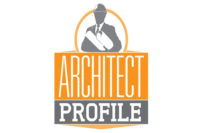With six decades under its belt, RTKL Associates has transitioned from being founded in a small basement office in Annapolis, Maryland to opening 12 offices worldwide including places such as London, Beijing and Dubai. RTKL has designed and built projects in more than 50 countries and on six continents all with one goal in mind: to deliver expertise that blends the best in world-class design with a deep understanding of local context, culture and client needs.
worldwide including places such as London, Beijing and Dubai. RTKL has designed and built projects in more than 50 countries and on six continents all with one goal in mind: to deliver expertise that blends the best in world-class design with a deep understanding of local context, culture and client needs.
W&C Architect interviewed Liz Wozny, an Associate at RTKL’s Washington DC office, who is an interior designer for the firm. RTKL prides itself on working with clients to develop both interior and exterior design goals by using specialists like Wozny who have more than 10 years of experience.
W&C Architect: How many years do you have in the profession?
Wozny: I have a little over 10 years of experience in the industry.
W&C Architect: What is your work history in this field?
Wozny: The majority of my experience is in Workplace Interiors, but I’ve also had the opportunity to work on many different project types including government, high-end residential, restaurants, libraries, and high-rise apartments.
W&C Architect: Where did you go to school?
Wozny: I received my Bachelor of Science in Interior Design from Virginia Polytechnic and State University in Blacksburg, Virginia.
W&C Architect: Did you have a specialization?
Wozny: During my four years at Virginia Tech, I earned a focus in both Graphic Design and Drawing. As a designer, I think it is important to be fluent in both skills in order to successfully convey your ideas to the client. Being able to present the idea is just as important as creating it, and being able to sketch in front of a client is essential.
W&C Architect: Do you approach architecture from an artistic or functional starting point? Are the two concepts exclusive?
Wozny: My approach to design is holistic. My strengths lie mostly in the conceptual phase of a project, but as I’m conceptualizing I’m thinking through every detail from how the space will be used and viewed, to how a wall or ceiling finish might transition. I feel that an artistic space needs to be functional to be successful and vice versa. To do one without the other would be a disservice to the end-user.
W&C Architect: If any, who are your role models?
Wozny: I wouldn’t say I have any specific role models, instead I look at my clients as my inspiration. Every organization is different, each with its own unique culture. I enjoy learning about how they work and what makes them successful, and in turn capturing that in the design of their space.
W&C Architect: What projects, other than your own work, do you find inspiring?
Wozny: I have to say, the design of our office here in DC inspires me every day. The design team successfully created a fun and energetic space that fosters an open and collaborative working environment. This allows me to be constantly inspired by what my coworkers are doing. I love what I do, but to enjoy where I spend the majority of my day is a real bonus.
W&C Architect: How many buildings have you designed?
Wozny: As an Interior Designer, I have not designed any buildings. However, working at a firm where the design of the Base Building and the Interiors often occur simultaneously, I have been able to influence building designs to best fit my clients’ needs. Working as a team, we are able to combine our efforts to give our clients purposeful and efficient spaces that function for them on all levels.
W&C Architect: If you had to choose one to represent your work, what project would you choose?
Wozny: I’d have to say both the renovation of the American Trucking Associations Legislative Offices (ATA) and the new Interior Fit-out for the National Democratic Institute (NDI) here in Washington, DC best describe my work. They are two very different projects completed at the same time, that each had unique goals and challenges. On ATA, our team was faced with the challenge to combine three existing structures (a modern office building, a historic row house, and a historic market) - all with misaligned floors - into one seamless, efficient workplace. The result was three distinct buildings when viewed from the outside and a continuous interior space that housed not only their office functions, but also a multi-purpose conference center, catering kitchen, and leasable office space. For NDI, we gave them a space that really spoke to their culture of being an International, Non-profit organization with the ultimate goal of creating an open working environment that promoted collaboration.
W&C Architect: What are your guiding principles when designing a structure?
Wozny: When designing a space for a client, my approach is to provide them with an environment that reflects their culture, represents who they are and addresses their project goals. I don’t design to a specific style, or make decisions based on personal likings. My projects have a consistent level of quality to them, but no two projects look alike.
W&C Architect: If you could have any building to redesign—anywhere in the world—which would you like to address?
Wozny: The opportunity to modernize the design of the White House, the ultimate symbol of power and home in the US would be a fun challenge. A building with such a long-standing history, what could it look like if it were designed today?
W&C Architect: What types of products interest you?
Wozny: I am typically drawn to products with a clean and classic look that my clients will still be pleased with 5-10 years down the road.





















